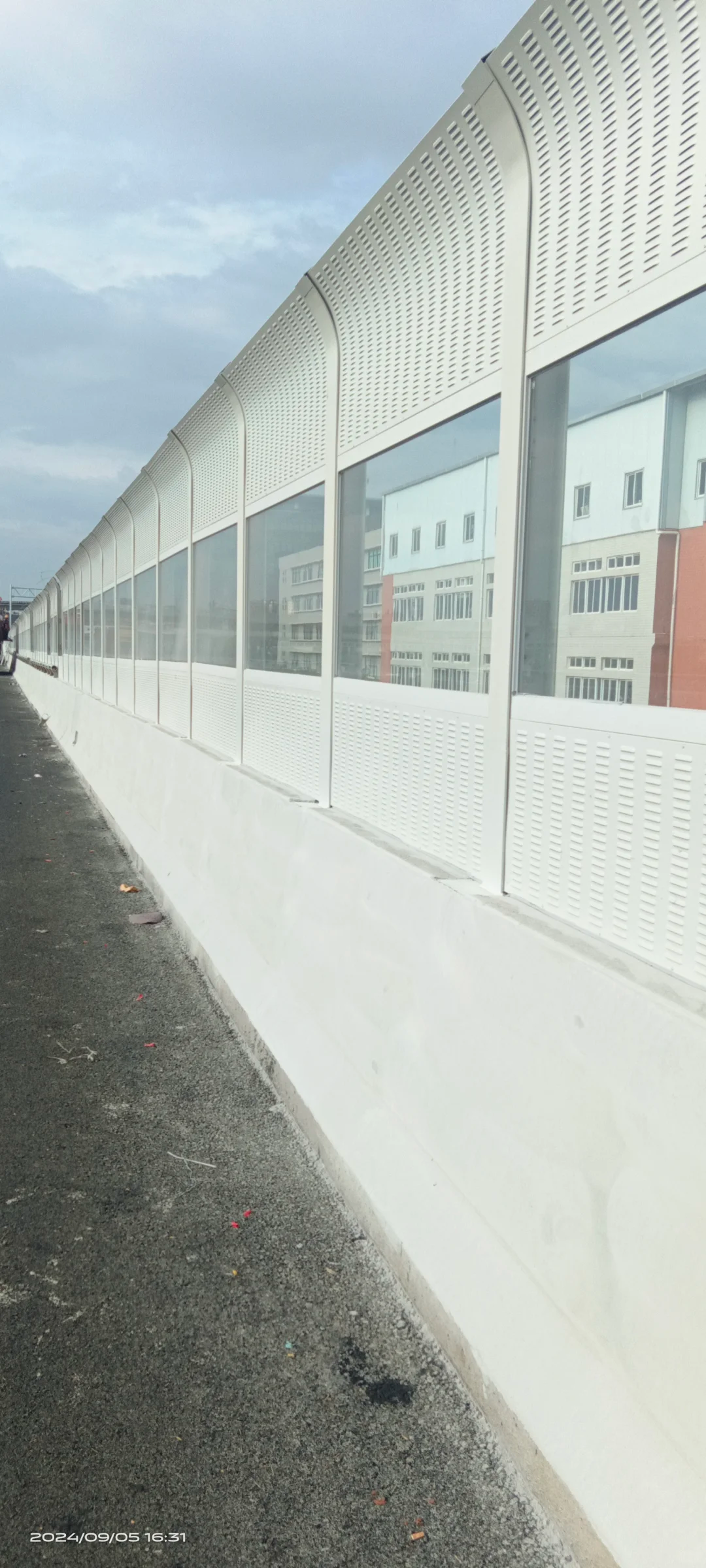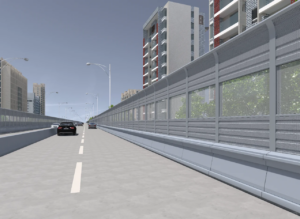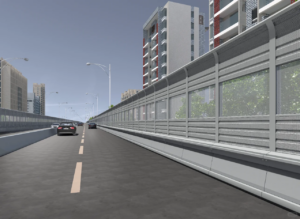Solid Polycarbonate Panels: Transforming Highway Sound Barriers

In the ever – growing landscape of urban and transportation development, the battle against noise pollution has become increasingly crucial. Sound barriers, specifically designed acoustic baffles, play a pivotal role in this fight. Their primary function is to impede the propagation of sound between a noise source, such as a busy highway, and the areas where people live, work, or study, thereby minimizing the impact of noise on the surrounding environment.
Understanding Sound Barrier Types

- Reflective Sound Barriers
- Reflective sound barriers operate on the principle of reflecting and diffracting sound waves. When sound waves hit the surface of a reflective sound barrier, a significant portion of the sound energy is redirected away from the receptor area. This type of sound barrier is often made of materials with smooth and hard surfaces. The reflection of sound waves is based on the law of reflection, similar to how light reflects off a mirror. However, while it can effectively reduce the direct sound reaching the sensitive areas, it may cause some sound to be redirected to other locations, which is known as the “shadow zone” effect.
- Composite Sound Barriers
- Composite sound barriers are a more advanced solution, combining the functions of sound absorption and sound insulation. These barriers are designed to not only block the direct path of sound waves but also absorb the sound energy that penetrates the barrier. By incorporating materials with high sound – absorbing properties, such as porous materials, along with sound – insulating layers, composite sound barriers can achieve a much more significant reduction in noise levels. The sound – absorbing materials work by converting the sound energy into heat energy, dissipating it and preventing it from being reflected back into the environment.
Solid Polycarbonate Panels: A Superior Choice for Sound Barriers
- In Reflective Sound Barriers
- Solid polycarbonate panels offer excellent performance when used in reflective sound barriers. Their smooth and dense surface makes them highly effective at reflecting sound waves. Polycarbonate has a high modulus of elasticity, which allows it to withstand the impact of sound waves without deforming easily. This ensures that the sound reflection performance remains consistent over time, even in harsh environmental conditions. For example, on highways, where large – volume traffic generates continuous high – intensity sound waves, solid polycarbonate – based reflective sound barriers can effectively redirect a substantial amount of sound energy away from residential areas or schools located nearby.
- In Composite Sound Barriers
- In the context of composite sound barriers, solid polycarbonate panels can be integrated with other sound – absorbing materials to create a highly efficient noise – reducing system. Polycarbonate’s lightweight yet strong nature makes it an ideal base material. It can be combined with materials like acoustic foams or fiberglass insulation. The polycarbonate layer acts as a sound – insulating barrier, preventing the direct transmission of sound, while the added sound – absorbing materials work in tandem to capture and dissipate any sound that manages to penetrate the polycarbonate layer. This combination results in a significant reduction in overall noise levels, providing a more peaceful environment for those in the vicinity of the noise source.

In conclusion, solid polycarbonate panels have proven to be a versatile and effective material for both reflective and composite sound barriers. Their unique properties, such as high impact resistance, excellent sound – reflecting capabilities, and compatibility with other sound – absorbing materials, make them an ideal choice for highway sound barrier applications. As we continue to strive for quieter and more livable urban environments, the use of solid polycarbonate panels in sound barrier construction is likely to increase, setting new standards for noise reduction in transportation infrastructure.
